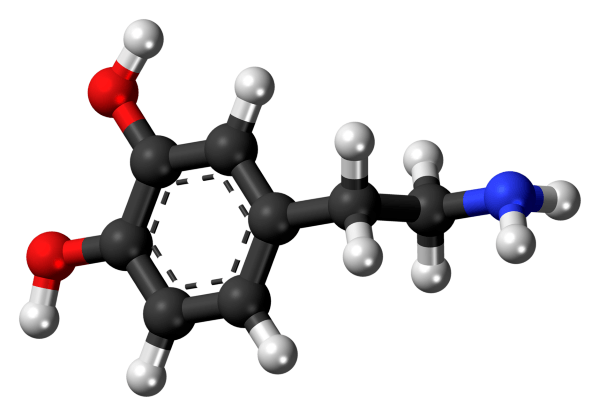Gamification Research Results: The Neuroscience Update - Mindfulness Ιn Action
I will summarize some of the work on how gamification mechanics affect the human nervous system by cross referencing some of it to work on video game fMRI (functional magnetic resonance imaging), functional and electrophysiological studies and to work on gamification test systems. Paul Howard-Jones at the University of Bristol has been conducting fMRI studies on gamification in learning for several years and his findings demonstrate something of significance that colleagues at the University of Toronto's Faculty of Medicine are just beginning to investigate. 80% of medical errors are now due to “default mode thinking”. This is defined as a physician seeing each patient as a category, not an example. Let me amplify this and clarify the problem.

Doctors see many of the same types of cases over the years and acquire a sense of expertise and self-conviction, hard fought by repetition with high consequence failures if they occur. As a result, they tend to create a narrative and treatment script for each similar case which is then applied routinely, so much so that they often fail to see the details of that particular case which stand out for a different approach, and hence the morbidity rates I cite. What Paul Howard-Jones (2011-2016) has shown alongside other studies is that gamification slows down the routine process, forcing us to shut it off. This shift of cognition from routine to careful focus can be titrated in their lab.
Not only that, but Howard-Jones and others have shown activation of the ventral striatum, the central reward and learning center of the brain, to be triggered by game mechanics but not through self-study or quiz completion. This is consistent with data from physiological studies of dopamine release during video game play, but takes the story one step further. It appears now that dopamine modulates reward prediction adjustments in addition to creating the classic “dopamine drip”, that desire to play again and again.

This indicates that if we present physicians with a simulation game that forced players to choose the most compelling option among 3 or more equally attractive options, default mode thinking should be reduced. Imagine a medical learning game where you must spend points to order tests and treatments, let's say, 1 point for either. You open with a case study, a man in respiratory distress. There are 12 options that appear on your screen, but you only have 5 points for the case. Which options should you select? This simple game mechanic results in the cognitive “slowing down” we are interested in for learning purposes.

In our beta trials for medical decision-making apps, thousands of games have been played among the test groups and it appears that it not only permits trainers to force smart choices, as evidenced by the improvement in successful cases/time observed, but also the collection of analytical data. These data were then used for micro and burst learning in nurses and personal support workers to modify behavior by focusing the trainer's attention on the key areas that gamers were failing at, one of them being dehydration. Data over the past 2 years since implementation are currently being summarized for publication. Dr. Raquel Meyer and Jennifer Reguindin of Baycrest Health Sciences have overseen and developed this system for use in broad training for management of the frail elderly. Clearly game systems in the lab have “teeth” in the real world.
The Prosocial Update: Distributed Community And Learning

There are a similarly impressive number of studies on serotonin and oxytocin release during game and gamification engagement which address our core concerns. It appears now that self-stimulation of serotonin release does occur, for example, during video game engagement. It is also clear that oxytocin has an unusual role in game behavior because it appears to modulate “gloating” after winning a round of test games. Gloating is a complex behavior and occurs often in video game competition alongside violent actions and long term interaction with other players. The working theory is that oxytocin-based gloating behavior does not reflect antisocial activities but rather engagement with winning conditions.
The role of winning conditions in gamification is something that bears some discussion; oxytocin appears to help modulate attachment to game outcomes, whereas dopamine appears to modulate reward expectations. Serotonin appears to modulate satisfaction and comfort in game environments, but these are broad views... in each study it can vary. The research also has to address whether new vs experienced gamers are playing 3D games vs 2D games and single player vs multiplayer games.

Before we draw any workable conclusions from these data, they must be nuanced by electrophysiological studies and morphological studies in related fields, those of IGD (internet gaming disorder – addiction), desensitization to violence, and empathy. Since serotonin and oxytocin appear to help mediate empathetic behavior it is useful to see how these other studies inform us. There are a number of studies showing that empathy is not decreased in long time violent video gamers, that is, players who are de-sensitized to violence using standard criteria.
Psychological studies have shown that gamers often experience altruistic encounters in video games, as more experienced players help “newbies”. In coherent evaluation of these and the neurochemical studies we can state the violence in learning games, which is copiously avoided in implementation, may be a good thing. It shows high engagement and does not appear to affect social relationships. This lies in stark contrast to the fear that is intuitive, that violent games create violent people. They instead create really motivated players. Up to the age of 36, the leading preference for games involved fighting and destruction for males vs. fantasy and completion for females and non binary gender players. After the age of 36 fantasy and completion take over and appear persistent.

This, alongside the data from Simon Fraser University produced by Dr. David Kaufman which showed the fastest new adopters of tech are seniors, appears to support that gamification impacts social networks in positive ways, across the lifespan and shows no reduction as we age. Work by AGE-WELL, Canada's national technology in aging network, has funded one of our studies so far, showing high learning in seniors using game systems comparing pre- and post-study knowledge. Gamification appears to have wide age reach and has the capacity to foster a working community.
If we are interested in mindfulness and reduction of default mode error across fields unrelated to medicine, the evidence is coming in steadily. Professors Deborah Fels, Rob Bajko, Jaigris Hodgson and myself have been engaged in research at Ryerson University, Royal Roads University, and now Wilfrid Laurier on conversion of undergraduate degree courses into game systems. Many university courses are still “3-hour PowerPoint” presentations and numerous meta-analyses of passive vs active learning in STEM programs show that active learning, such as those which occur during gamification, show a one-point increase in GPA. Not only this, but one recent study showed that gamers in university had a one-point increase vs. non gamers.
So in both cases, during active learning and game playing, students who participate showed a full grade higher in outcome than controls. Now, that does not mean gaming increases learning per se in the former example. It may just be an association... maybe smart students also like to game more. But the evidence is compelling. Medical education and professional education need to be active and probably should be gamified.

In my next article I will submit a discussion of the outcomes of the Ryerson gamification research team and our recent work on the use of game systems to manage addiction using cognitive behavioral rewards. Clearly the reach of gamification in eLearning is no longer a matter of learner preference and engagement; it appears to modulate the outcomes of learning in ways that nothing else can.









